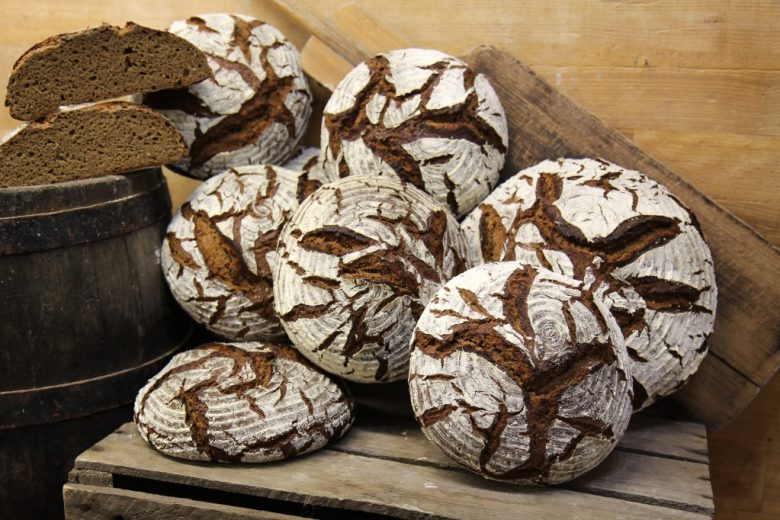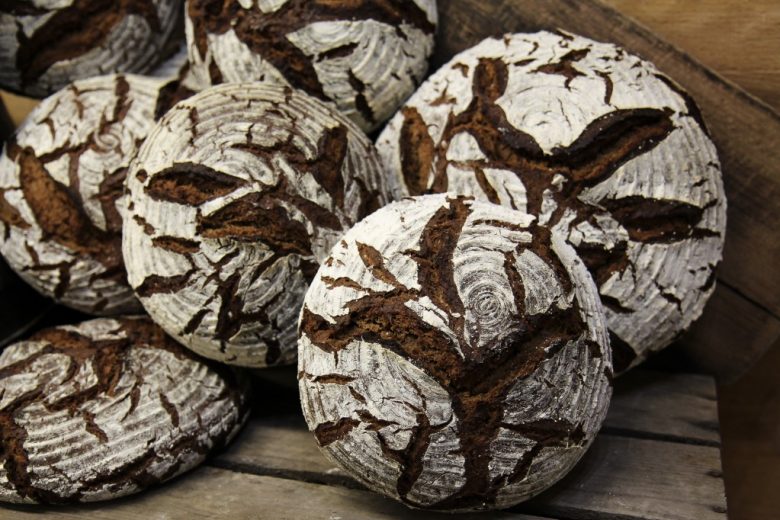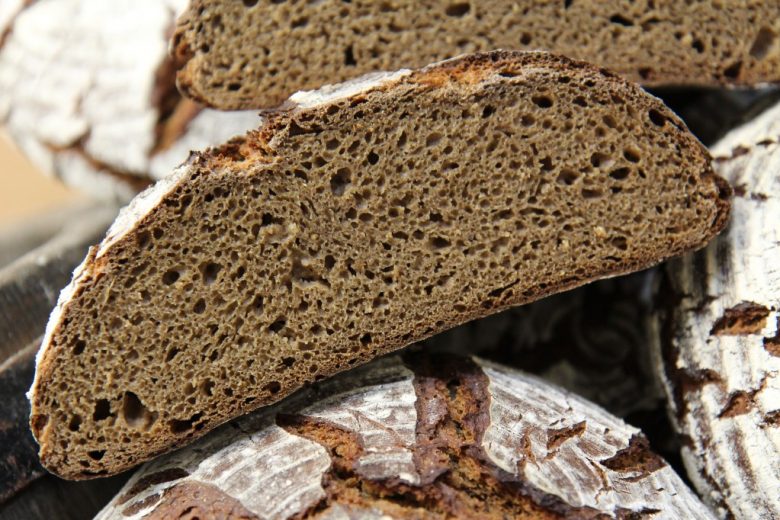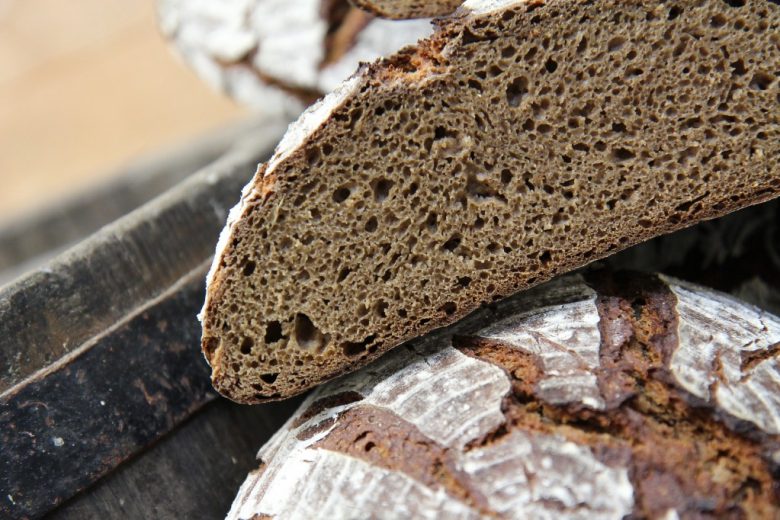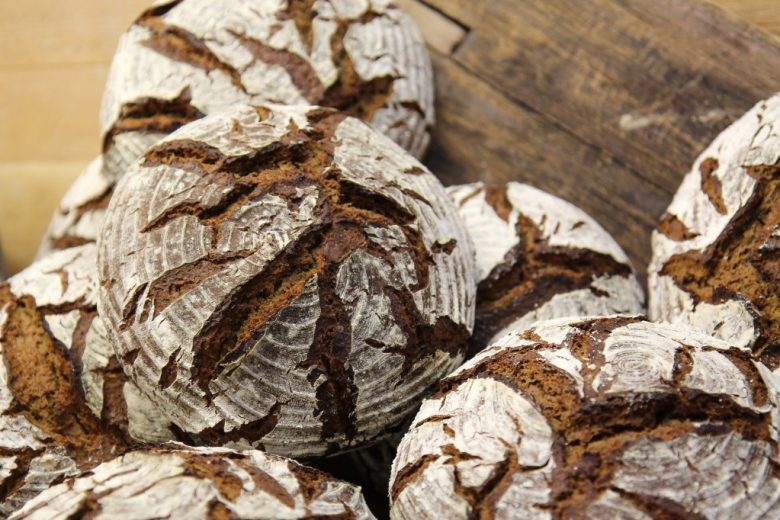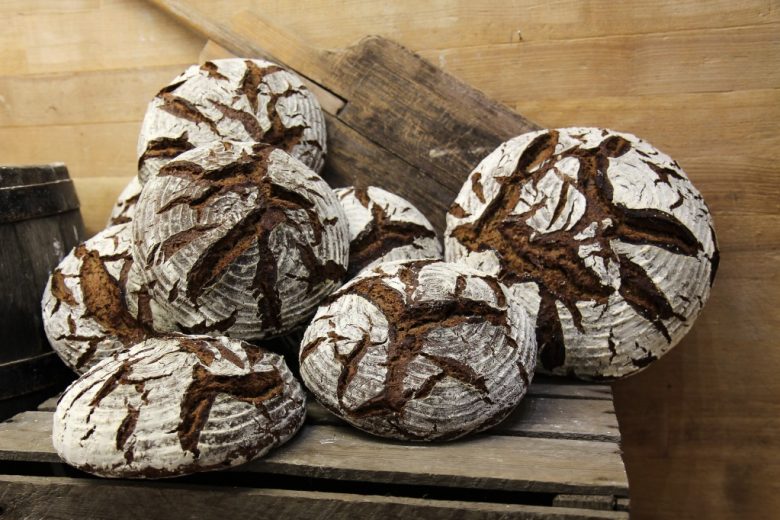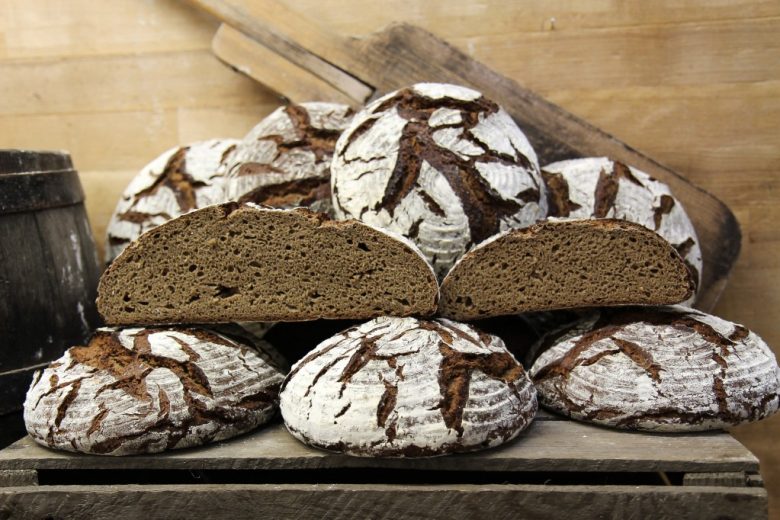Spelt Rye Bread without Yeast
Technical baking properties of rye ingredients
In comparison to wheat flour products, rye flour products have other dough and baking properties due to differences in the composition of the flour.
In comparison to wheat flour, rye flour contains:
- Less absorptive proteins (less capacity to hold gas, less stability)
- More soluble sugars (more capacity to create gas)
- More pentosans that can bind water (greater dough hydration, less malleable dough)
- More starch-consuming enzymes (additional sour element needed)
Flour composition and its effects on dough and baking properties:
Protein
- Proteins lack gluten-building properties, meaning the gluten cannot develop through the addition of water.
- The glutenin and secalin proteins bind water during the dough-making process and release it during the dough-baking process.
Mucilage (pentosane, soaker components)
- Soluble mucilage binds water, thereby raising the viscosity of the dough.
- Insoluble mucilage absorbs a large amount of water during the making of the dough (up to 10 times its own weight).
- The uptake of water leads to the formation of mucilage. This slimy substance is responsible for rye doughs being stickier, less elastic and less workable.
- Mucilage-containing elements traverse rye doughs in a net-like fashion, making them crucial to dough development. They give the dough the bonds needed to be able to sufficiently withstand gas and remain stable.
Starches
- Starches store water at the surface (pore absorption)
- The rye starches become sticky at a temperature range that makes the starch-dismantling enzyme amylase particularly active.
- The more starch that is broken down, the smaller the amount of sticky starches in the dough needed to form the crumb.
Soluble sugars
- They are food for yeast and lactobacilli, and they also impact the development of flavor and the browning of the crust.
Spelt-Rye Loaf
The spelt-rye loaf is a mixed rye bread with a moist crumb and a strong crust. The bread tastes pleasantly mild and stays fresh for a long time due to the addition of dark rye. Because the rye is the dominant component here, it is important that you don’t knead the dough too long and too intensely. It’s enough to mix the ingredients slowly for 4-5 minutes.
Recipe
For a dough weight of 1381g = 1 loaf
Sourdough:
Stage 1:
- 10g Starter
- 130g rye flour type 960
- 130g water 35°C
DT: 26-28°C RT: 12-14 hours TA 200
Stage 2:
- 270g Sourdough (stage 1)
- 185g water 35°C
- 65g rye flour type 960
DT: 28-30°C RT: 3-4 hours TA: 265
Bread Soaker:
- 60g dry leftover bread
- 140g water 35-45°C
Resting time: 3-4 hours
Main dough:
- 520g mature sourdough
- 200g bread soaker
- 250g spelt flour type 630
- 150g rye flour type 960
- 100g rye flour type 2500
- 120g water 35°C
- 25g rye malt powder (or darkly roasted rye flour)
- 16g salt
- + spices as desired
Instructions:
- Mix all ingredients until they form a smooth dough (4-5 minutes at slow speed).
- After mixing, scrape down the dough from the sides of the bowl and let the dough rest covered for 25-30 minutes.
- After it has rested, shape the dough into a round loaf and place seamside-down in a floured proofing basket.
- After 50-60 minutes (3/4 proofed) tip the loaf out of the proofing basket and place into the oven with strong steam at 250°C. Release the steam after 3-5 minutes once the crust cracks have formed as desired.
- The bread bakes for an initial 15 minutes at 250°C.
- Then lower the temperature to 200°C and bake until well-browned.
- Total baking time 65-75 minutes.


